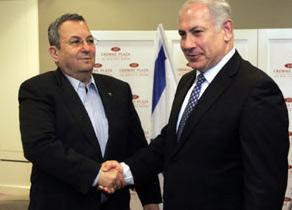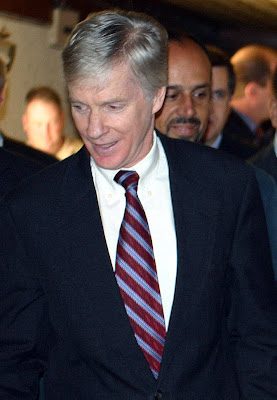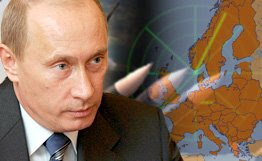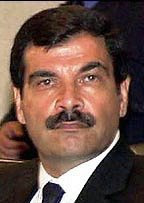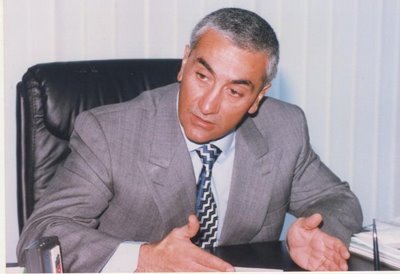I am posting this article because it is a classic case of utter stupidity by some journalists...or they are simply paid to fabricate stories knowingly....anyone who knows anything about covert operations and clandestine work...will know instantly that this article is pure nonsense....The main purpose of the article is to propagate a myth about MOSSAD...and to protect the real assassin of Imad F. Moughnieh, Asef SHAWKAT of Syria's military intelligence killers/assassins and murderers for hire...
Enjoy from now on...some of the most unadulterated paid "journalistic crap" fit for a fiction novel... I had no idea that journalists are so cheap, superficial and utterly idiotic.
En Israël, Eli Cohen est un nom mythique. Dans les années 60, cet agent du Mossad, Juif d’origine égyptienne, défraya la chronique en infiltrant profondément le monde politique et militaire syrien. Les moissons de renseignements qu’il transmit au quartier-général permirent à Israël de gagner triomphalement la guerre des Six Jours. Finalement capturé par les Syriens, Eli Cohen fut pendu à Damas le 18 mai 1965. Dans sa dernière lettre à sa femme, il concluait sur un mot qui lui brûlait les lèvres et qu’il avait dû cacher pendant plus de mille jours en territoire hostile : « shalom ».
Légendaire, son nom figure aujourd’hui sur le monument de grès sculpté en forme de cerveau et construit au sein de la caserne de Tsomet Glilot, le quartier-général du Mossad, au nord de Tel Aviv. Chaque future recrue du Bureau passe devant cet immense encéphalogramme rappelant les différentes devises du Bureau : « par la ruse tu feras la guerre », et « par l’abondance de renseignements, tu triompheras »
Quatre décennies plus tard, une nouvelle figure marche dans le sillon d’Eli Cohen. Mais ce héros moderne n’est pas Israélien, bien qu’un passeport factice ait été publié à son nom. Il n’est pas Juif ; de nationalité libanaise, il prie Allah chaque vendredi. Pendant vingt-six ans, cet homme aux cheveux blancs, à l’allure sportive et au sourire calme a été la meilleure source à laquelle ait jamais eu accès Israël.
Flash-back : à l’automne 2008, les forces de sécurité libanaises annoncent la capture d’un agent de tout premier ordre. Les informations sortent au compte-goutte mais son nom fait le tour du monde arabe : Ali al-Jarrah.
Liban : la famille al-Jarrah
Ali al-Jarrah est né il y a environ cinq décennies dans la vallée de la Bekaa, au nord-est du Liban, près de la frontière avec la Syrie. Il grandit dans la petite ville de Al-Marj, entre la rivière Litani et Ghazayel. Avec 15,000 habitants répartis en 58 familles, la population citadine se connaît par coeur. La famille « al-Jarrah », au sens arabe du terme, fait partie de la bourgeoisie locale.
Dès le début, des fissurent apparaissent à l’interne. Une clan est ouvertement pro-islamiste et a décidé qu’Israël était le coupable. L’autre clan, pro-occidental, en veut aux Assad et à l’OLP. A l’image du Liban, les al-Jarrah vivent leur propre guerre civile.
En 1982, la dynastie al-Jarrah implose avec l’invasion israélienne du Liban. Une partie du clan, avec Assem et Refet, les frères d’Ali, rejoint les jihadistes de l’OLP. Ali, lui, refuse de s’allier à Arafat, qu’il rend responsable du déclin de son pays, et s’engage dans l’armée du Sud-Liban, formée par Israël pour maintenir l’ordre dans les territoires occupés. Son profil est immédiatement repéré par la Melukah, le service de recrutement du Mossad. Sa nouvelle vie commence.
L’homme est un officier supérieur, bien au fait des règles du secret, de la stratégie et du matériel militaire. Il a été éduqué à l’université et a beaucoup voyagé dans les années 70. Toutes ces qualités font de lui un espion supérieur de la moyenne. Ali possède aussi des défauts qui plaisent au service israélien : il est marié à deux femmes différentes, en secret. La première vit à Al-Marj, la seconde à Beyrouth. Les différents superviseurs d’Ali ne manqueront pas de lui rappeler cette situation à des fins de chantage.
Ali commence sa carrière comme safan, c’est-à-dire informateur du Mossad spécialisé sur les Palestiniens. Le Bureau lui fournit un véhicule militaire, un laissez-passer et une couverture politique suffisamment solide pour qu’il ait accès à tous les lieux sensibles sans être bloqués aux barrages de l’armée. Ali débute avec un salaire misérable, pas plus de cent dollars par mois, et rejoint son superviseur dans les bases militaires israéliennes du sud Liban.
Plusieurs fois, au fil des années, le Mossad le fait passer clandestinement en Israël pour le former et le mettre en contact avec ses supérieurs. Dans l’autre sens, des camions traversent le Liban de nuit et ravitaillent Ali en matériel électronique. Sa demeure secondaire, une maisonnée située dans la ville de Masnaa, au bord de la route principale reliant la Syrie au Liban, devient un quartier-général de haute technologie, opérationnel vingt-quatre heures sur vingt-quatre.
Ce qu’Ali ignore, c’est que son frère Assem a embrassé lui aussi une nouvelle carrière, mais dans l’autre camp.
Allemagne : le clan libyen
Assem Omar al-Jarrah, le frère d’Ali, est le premier à quitter le Liban et s’évaporer en Europe. En 1983, il annonce à ses proches qu’il s’est inscrit en pharmacie à l’Université de Greifswald, en Allemagne de l’Est. Sa famille est folle de joie.
En réalité, Assem a quitté l’OLP et a été recruté par la Jamahiriya, les services secrets libyens. Doutant de la loyauté de ses « amis » soviétiques, le colonel Khadafi cherche à contrôler les informations qui circulent sur son compte et anticiper les mouvements du Kremlin. Impossible, cependant, d’agir en URSS où se barricadent les services secrets russes. Mieux vaut infiltrer l’une de ses ramifications au sein du Pacte de Varsovie. Le choix libyen se porte sur la RDA, et l’agent sélectionné répond aux exigences de la période ; un Arabe, libanais et universitaire, alors que Pays du Cèdre connaît la guerre, voilà une personnalité qui intriguera la STASI, la police secrète de l’Allemagne de l’Est. Assem al-Jarrah a le profil. La Libye lui paie des études fantômes et le prie d’être suffisamment discret pour attirer l’attention du renseignement est-allemand, que l’on sait paranoïaque. La stratégie de la Jamahiriya fonctionne au-delà des espérances.
La STASI (Staatsicherheit, Sécurité de l’Etat) surveille Assem dès son arrivée à Greifswald. Elle l’engage une année plus tard. L’étudiant libanais prend le nom de code « Karsten Berg » et se voit affecter à la XVe section du district de Neubrandenburg, en tant qu’agent chargé des opérations de renseignement à l’étranger.
Tout en explorant le monde pour le compte de la STASI et des Russes, Assem renseigne Khadafi. Il lui apprend notamment que le Kremlin est fatigué des crimes commis par Abou Nidal, le terroriste arabe le plus célèbre des années 80, formé comme ses semblables à « l’université Lubianka » (siège du KGB). Les Soviétiques ont diligenté une enquête sur Abou Nidal et comptent le faire sortir de scène. Code de l’opération : « dealer ».
Le KGB a délégué les aspects opérationnels de la mission à la STASI, et à son meilleur agent arabe Assem al-Jarrah. L’agent double renseigne immédiatement son véritable employeur. Khadafi évacue Abou Nidal vers une destination secrète, le fait protéger puis se sert de ses compétences pour semer la mort en Europe et au Proche Orient.
Après trois années de service à la STASI, Assem al-Jarrah reçoit une promotion. Il devient officier IMB (en contact avec l’ennemi) au contre-espionnage, section II de l’administration de Rostock. Il en profite pour faire venir son frère Refet dans la RDA, et l’inclure dans son réseau.
Agents double pour la Lybie, premier Etat sponsor du terrorisme à l’époque, les deux hommes finissent par côtoyer tous les grands cerveaux islamistes cachés en Allemagne. Ils deviennent des habitués des mosquées fondamentalistes et des cellules terroristes installées dans le pays par l’Irak, l’Iran, la Syrie ou encore le Pakistan.
Leur double jeu tourne court : à la fin des années 80, une note du GCEI (Groupe Central de l’Evaluation et de l’Information) de la STASI s’inquiète de leurs activités douteuses. Quelques mois plus tard, la section XXII du contre-espionnage ouvre une enquête, mais elle s’effondre avec le Mur de Berlin. Durant les années qui suivent, Assem et Refet demeurent à Greifswald sans être inquiétés par les autorités allemandes.
Liban : au service d’Israël
Alors que ses frères s’enfoncent dans la clandestinité en Europe, Ali continue sa vie d’espion au Pays du Cèdre. Le Mossad lui a bâti une nouvelle couverture, humanitaire, qui lui permet de voyager à travers le Liban mais aussi de passer la frontière régulièrement et s’approcher des ports, où il dit superviser des arrivages de médicaments.
Ali fait des allers-retours fréquents entre sa luxueuse propriété d’Al-Marj et son appartement plus modeste de la ville frontalière de Masnaa, juste derrière l’antenne de la police locale.
Dans l’organigramme du Mossad, il est devenu indispensable. La qualité des informations qu’il publie impressionne Tel Aviv. Tous les trimestres, son superviseur le contacte sur son téléphone portable, et lui donne rendez-vous dans un pays tiers. Ali atterrit successivement en Egypte, à Chypre, en Jordanie ou en Italie, où l’antenne du service lui fournit un passeport afin de pouvoir entrer en Israël. Il n’y reste que deux ou trois jours, pendant lesquels le service en profite pour le familiariser aux nouvelles technologies et aux méthodes de filature. Ali reçoit un ordinateur spécial et plusieurs systèmes radio. Il s’entraîne à transmettre ses renseignements par ondes décamétriques et apprend par coeur les grilles nécessaires au déchiffrement des messages de la station KPA du Mossad, qui émet depuis les antennes du QG-bunker de Nes Ziyona.
Outre son habitation de Masnaa, dont le salon est devenu un centre de haute-technologie, Ali reçoit un nouveau véhicule, une Jeep Mitsubishi retravaillée par le Département technique. Des caméras minuscules sont implantées dans les portières, les phares et le pare-choc. Pendant des années, Ali sillonne toute la vallée de la Bekaa, les quartiers sud de Beyrouth et la périphérie de Damas, la capitale de la Syrie. Les bandes vidéo de ces voyages terminent à Tel Aviv, et permettent aux agents israéliens d’obtenir une vision parfaite de leurs théâtres des opérations.
Ali engage bientôt son frère, Yusuf, pour l’épauler dans l’immense charge de travail exigée par Israël. Le Mossad, conscient des qualités de son agent, lui octroie des augmentations fabuleuses. Ali al-Jarrah devient l’espion le mieux payé de l’histoire du Moyen Orient : 7′000 euros net par mois, plus des primes, trois véhicules et des avantages sous la forme de téléviseurs et d’ordinateurs pour ses enfants. Autour de lui, Ali justifie sa vie luxueuse en parlant de son « organisation humanitaire internationale ». A sa première femme, il cache l’existence des nouvelles lignes téléphoniques sécurisées, et continue à voyager à l’étranger.
Durant les deux décennies suivantes, Ali al-Jarrah travaille sans répit. Il suit l’histoire de la région, en décrypte les subtilités et informe Israël. Il transmet également des photographies et des vidéos des installations militaires et civiles du Liban, de la Syrie et de l’Iran. En 1995, il renseigne Jérusalem sur les déplacements de Feithi Shkaki. Chef religieux du Jihad islamique, celui-ci fait la navette entre le Liban et la Lybie où Khadafi lui promet des fonds destinés aux attentats-suicides. Alors que Shkaki est en déplacement pour effectuer une énième levée de fonds du côté de Tripoli, un commando israélien vient à sa hauteur à moto, sur le port de La Valette, à Malte, et le fauche d’une rafale. Grâce à Ali, le terrorisme palestinien perd l’un de ses meneurs.
A Tel Aviv, on mesure la qualité du réseau al-Jarrah : il est simplement le meilleur depuis la création du service, en 1949. Le Mossad est prêt à passer à la vitesse supérieure.
Allemagne : le réseau islamiste
A Greifswald, Assem et Refet n’ont pas perdu leur temps. Le contrat qui les liait avec la Lybie a expiré avec la fin de la guerre froide, mais les deux frères ne comptent pas quitter le milieu clandestin. Ils se sont rapprochés du fondamentalisme sunnite se développant en Allemagne. Grâce à des contacts dans les milieux religieux locaux, ils intègrent Al-Qaeda, la nébuleuse d’Oussama Ben Laden. Dans leur demeure de la Makarenkostrasse, Assem et Refet coordonnent les transferts d’argent et de matériel entre l’Europe et les Balkans.
Les deux hommes reçoivent bientôt la visite de leur neveu, un jeune Libanais lui aussi venu « pour étudier les sciences » à Greifswald. Nous sommes en 1995. Ce jeune étudiant fraîchement débarqué s’appelle Ziad.
Ziad al-Jarrah se prépare à devenir le pilote-kamikaze du vol 93 qui s’écrasera en Pennsylvanie le 11 septembre 2001.
Liban : Guerre contre le Hezbollah
Avec le retrait israélien, le Liban tombe sous la coupe du Hezbollah. Aussi le réseau d’Ali al-Jarrah devient-il un pan non négligeable de la stratégie israélienne dédiée au front nord. Le Mossad ordonne à Ali de surveiller la vie politique et militaire de Beyrouth. Des témoins le remarquent en train de photographier des halls d’entrée de bâtiments appartenant au Hezbollah.
Lorsqu’Israël riposte, en 2006, l’aviation détruit tous les ponts menant à Beyrouth, à l’exception d’un seul. Intoxiquées par le LAP, le département de guerre psychologique du Mossad, les agences de presse annoncent la création d’un « couloir humanitaire » alors qu’il s’agit du pont reliant la demeure d’Ali au centre-ville de Beyrouth, distant de cinquante kilomètres. Avec sa jeep, Ali effectue des allers et retours vers la capitale libanaise, où il travaille en coordination avec deux cellules : le « cercle de Beyrouth », dirigé par Mahmoud Gemayel et implanté dans le district Dahya, chef-lieu du Hezbollah dans la capitale, et le « réseau Mukleid », situé au Sud-Liban, entre les villages de Itrun et Bint Jubeil.
Le recoupement des informations de ces trois sources est si efficace qu’il permet aux forces spéciales israéliennes d’effectuer un assaut spectaculaire sur la ville, début août 2006. Mais la guerre tourne mal. Le contre-espionnage du Hezbollah renforce sa mainmise sur le Liban. L’automne tourne au cauchemar. Le « cercle de Beyrouth » et le réseau « Mukleid » sont démantelés et leurs membres exécutés. Ali est immédiatement évacué par le Mossad, qui le cache pendant un mois à Amman, en Jordanie voisine. La situation au Liban se dégrade pour Israël, qui voit resurgir son ennemi le plus coriace.
Syrie : le « renard »
Il s’appelle Imad Mughniyeh . Co-fondateur du Hezbollah et chef de son organe de renseignement, c’est le terroriste islamiste le plus dangereux de l’histoire contemporaine. A côté de lui, Oussama Ben Laden fait figure d’amateur. Surnommé « le renard », Mughniyeh est le fugitif numéro un pour le Mossad et la CIA. Sa tête est mise à prix pour 25 millions $. Au milieu des années 90, Mughniyeh a passé six mois reclus dans une clinique arabe ; la chirurgie esthétique l’a rendu méconnaissable. Nul ne sait où il se trouve et à quoi il ressemble. Même Um Imad, sa propre mère, n’a plus de photo de lui !
Amer par sa semi-défaite au Liban, le gouvernement israélien charge son service secret d’écraser la hiérarchie du Hezbollah. Pour la première fois depuis dix ans, le Mossad obtient carte blanche et un budget monstrueux ; il établit sa stratégie à la lumière des leçons de l’histoire. A la suite des attentats de Münich, en 1972, Israël était parvenu à anéantir le groupe terroriste palestinien « Septembre noir » en le décapitant de ses principaux chefs. L’état-major israélien n’hésite pas.
Objectif : Imad Mughniyeh.
La localisation de l’homme le plus traqué du monde est un modèle de travail de renseignement. En mars 2007, l’armée américaine mène un raid audacieux contre des officiers du Hezbollah réunis à Bassora, en Irak. Un officier supérieur des Gardiens de la Révolution, Ali Moussa Daqduq, est capturé. L’homme feint d’être sourd et muet, mais une équipe de la CIA parvient à le faire parler. Son grade élevé et les liens étroits entre la guérilla irakienne et le Hezbollah font de Daqduq un personnage très informé : il donne une description de la nouvelle apparence d’Imad Mughniyeh, le nom de ses fréquentations et même son numéro de téléphone secret ! Daqduq révèle à la CIA que le “le renard” se terre à Damas, où il est protégé par la police secrète syrienne. Alerté par les Américains, le Mossad passe à l’action.
En effet, dès son retour de Jordanie, “le réseau al-Jarrah” se rend plusieurs fois dans le quartier hautement sécurisé de Kfar Soussa, à Damas, là où se trouvent non seulement les demeures des personnalités fortunées du régime mais aussi les missions diplomatiques.
En novembre 2007, Ali et son frère repèrent le véhicule de Mughniyeh, une Jeep Mitsubishi Pajero, et le photographient d’une roue à l’autre. Les clichés partent à Tel Aviv, où ils sont étudiés par le Département technique. Sur photographie, le quartier-général du Bureau rachète un modèle identique dans un garage de Tel Aviv, pendant que le Département fabrique les plaques d’immatriculation et tous les détails figurant à l’intérieur du véhicule, même les plus infimes.
Après avoir ramené la Mitsubishi dans les sous-sols du quartier-général, les mécaniciens reproduisent les altérations de la carrosserie et des gentes visibles sur les photographies. Le réseau d’al-Jarrah a relevé des rayures sur le pare-brise, et un pneu légèrement dégonflé. Ces informations sont reproduites sur la copie. Un vrai travail d’orfèvre. Il faut trois semaines pour que les ingénieurs israéliens consentent à laisser repartir la voiture, copie conforme de la Mitsubishi de Mughniyeh, à un détail près?
En effet, un expert du Yachsap, l’unité des artificiers de Tsahal, a ajouté une charge explosive dans le rembourrage du siège. Un récepteur la relie à un satellite. C’est un travail d’une extrême minutie, que la moindre erreur peut faire échouer. Ici encore, le Mossad s’inspire des leçons de l’histoire : l’élimination d’un terroriste ne suffit pas ; son impact psychologique prime tout autant. Si l’ennemi meurt, et que personne ne comprend comment, son état major s’égaiera aux quatre vents. Ainsi disparut « Septembre Noir ».
En 1972, le Mossad avait ciblé Mahmoud Hamshari, commanditaire du massacre d’athlètes israéliens à Munich et porte-parole de l’OLP en France. Une copie piégée de sa table de chevet avait voyagé 4′000 kilomètres, de Tel Aviv à Paris, pour être introduite clandestinement dans son appartement. Là, des combattants du Mossad l’avaient installée à la place du meuble du téléphone. Hamshari était mort sans comprendre. La frappe était si précise et si bien préparée que les enquêteurs de l’OLP, comme la police française, n’avaient pas pu établir les faits. Face à Mughniyeh, le Mossad est prêt à réutiliser ce mode opératoire, et instiller la peur chez l’adversaire.
Fin janvier 2008. La fausse voiture de Mughniyeh est transportée clandestinement en Syrie par voie navale, avant d’être cachée dans une planque du Mossad en périphérie de Damas. Parallèlement, Jarrah apprend à ses contrôleurs que Mughniyeh entretient une relation secrète avec une femme, et pour éviter que l’on ne jase à son sujet, il se rend chez elle en toute discrétion, sans avertir ses gardes du corps ni ses protecteurs syriens. Cette faille sécuritaire lui est fatale : alors que le leader du Hezbollah batifole en secret, des agents israéliens forcent le verrou de sa Jeep, emmènent le véhicule avec eux et parquent discrètement la copie piégée sur la place vide. Puis, fidèle à ses pratiques, le Bureau attend patiemment son heure.
Lorsque le Mossad apprend que Mughniyeh a prévu de se rendre à la célébration du 29e anniversaire de la Révolution islamique iranienne, le 12 février, il voit ses deux exigences être réunies : l’opportunité, et le symbole.
Nous sommes le 12 février 2008. Le Bureau suit le leader du Hezbollah depuis une semaine, depuis qu’il roule dans ce qu’il croit être sa Jeep. Israël s’est assuré que Mugniyeh était seul conducteur. Les artificiers du Yachsap ont préparé la bombe pour qu’elle ne fasse sauter qu’une partie du véhicule. Ni l’avant, ni l’arrière de la Mitsubishi ne doivent exploser. Les dommages collatéraux sont interdits au sein du Bureau. Si un tiers se trouve dans une voiture à côté de celle de Mughniyeh, il ne risquera rien. En 2004, Ghaleb Ghali, promoteur d’attentat-suicide du Jihad Islamique, avait été éliminé dans des circonstances similaires, avec une précision d’horloger.
22 heures 30. A l’intérieur d’un bâtiment vitré, la réception organisée par les mollahs pour le 29ème anniversaire bat son plein. Chaque ambassade arabe a envoyé une délégation à ce cocktail, qui figure parmi les plus cotés de ce mois de février à Damas. Dans l’assemblée, un homme joufflu, une barbe poivre-sel et un nez écourté par la chirurgie esthétique, boit un jus de fruit. Au cours de la soirée, il s’entretient brièvement avec l’ambassadeur de la République islamique d’Iran en poste à Damas, Hojatoleslam Ahmad Musavi. Les deux hommes s’embrassent à l’arabe, et l’homme joufflu quitte la réception. Il sort dans la nuit, sur le parking.
Damas. 22h 35. Mughniyeh s’installe dans la Mitsubishi piégée. A peine a-t-il enclenché le moteur qu’il est tué par l’explosion. Avec le souffle, son corps s’envole de plusieurs mètres et part s’écraser contre les vitres de l’immeuble où se déroule la réception.
Au même moment, le Ministre de la Défense israélien, Ehud Barak, suit une conférence avec son homologue turc à Istanbul. Soudain, sa secrétaire militaire, seule personne de son entourage à être autorisée à manipuler des notes confidentielles, rentre dans la pièce. Les journalistes qui suivent la visite israélienne voient la femme s’approcher discrètement de Barak et lui tendre une note manuscrite. Celle-ci contient quelques mots, la confirmation de la frappe. Le même message arrive au bureau du Premier Ministre dans la foulée.
A Damas, la mort du leader emblématique du Hezbollah est un véritable choc pour les organisations terroristes et les Etats ennemis d’Israël. Si l’homme le plus recherché du monde est abattu en plein quartier diplomatique, alors qu’il sort d’une réception organisée par l’Iran, qui peut se penser à l’abri ?
H. Syrie : Fin de partie
A l’heure où le Hezbollah enterre son chef, le réseau al-Jarrah s’est déjà éclipsé, loin de Damas. Il a reçu une nouvelle mission, celle d’observer la cité portuaire de Tartous, en Syrie. C’est là que se trouve la résidence secondaire de Mohammed Suleimane, bras droit du président de la Syrie, Bachar el-Assad. Ali et son frère Yusuf s’exécutent. Ils rapportent des plans détaillés de la villa du général, qu’ils transmettent au Mossad depuis une planque du sud de Beyrouth. Nous sommes le 7 juillet 2008. Mais Ali a été repéré par l’ennemi. Après une longue enquête, des forces spéciales du Hezbollah surprennent les deux frères en flagrant délit et les kidnappent. Après vingt-six ans d’exploits, le réseau libanais des al-Jarrah est démantelé.
Leur travail, lui, continue à porter ses fruits. Le 2 août 2008, le général Suleimane se repose dans sa villa en bord de mer, à Tartous. Alors qu’il bronze sur sa terrasse, un hors-bord s’immobilise au large. Un sniper du Mossad le descend de quatre balle de silencieux, dans le cou. Symbole suprême : Suleimane est éliminé le jour de célébration nationale des forces armées syriennes. Le message ne souffre d’aucune ambiguïté : la présidence syrienne ne se remettra jamais de cette mort.
A Beyrouth, le sort des deux frères al-Jarrah est désespéré. Pendant cinq mois, ils sont torturés par le Hezbollah. On finit par les remettre aux services de sécurité libanais en novembre 2008. L’affaire éclate dans les médias ; les deux condamnés encourent la mort pour espionnage.
Nul ne sait comment Meir Dagan, le directeur général du Bureau, a réagi à la nouvelle de la capture d’Ali al-Jarrah. Et nous ne le saurons jamais. Peut-être a-t-il répété les paroles de Meir Amit, son prédécesseur ? Lors de la mort d’Eli Cohen, celui-ci avait soufflé aux employés du Mossad, ému : « il était le meilleur, le meilleur d’entre nous ....! »
